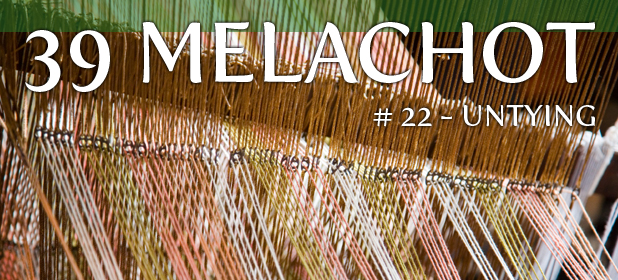The nets that were tied, as described in the previous melacha, sometimes had to be untied. This is matir (untying), the reciprocal melacha of kosheir (tying).
When a melacha has a reciprocal (such as writing/erasing, igniting/extinguishing, etc.) a good rule of thumb is that if you can’t take something from status A to status B, you likewise can’t take it from status B to status A. So, if you can tie a bow in a shoelace, you can untie it as well. If you can’t tie a boat to a dock, you can’t untie it, either.
However, there are certain knots that don’t meet the Biblical definition of permanence and that are only prohibited to be tied Rabbinically. When the Rabbis applied stringencies in the case of tying, they did not always impose corresponding stringencies on untying. For example, while a double knot may not be tied in a shoelace on Shabbos, it may be undone if it keeps you from putting the shoe on or off.
Of course, to know which knots may be untied on Shabbos even though they may not be tied on Shabbos entails understanding the differences in the various types of knots. While it is beyond our scope to delve into this in sufficient depth, we reiterate the importance of familiarizing oneself with the details of these melachos.
This is just an introduction to the concepts of the melacha of matir; it is not a substitute for a full study of the halachos.
